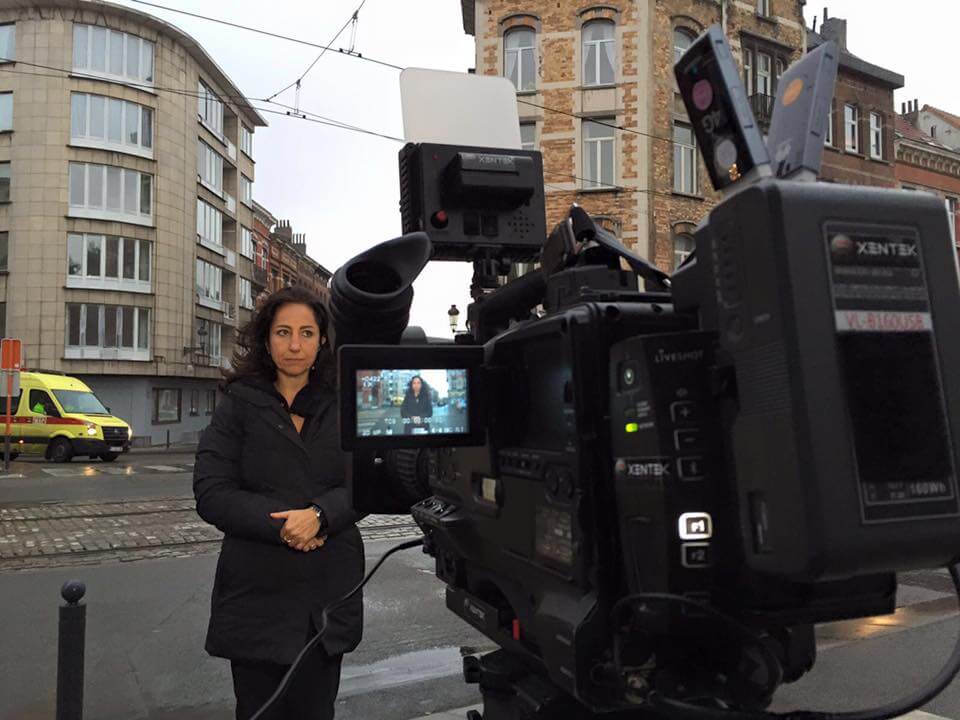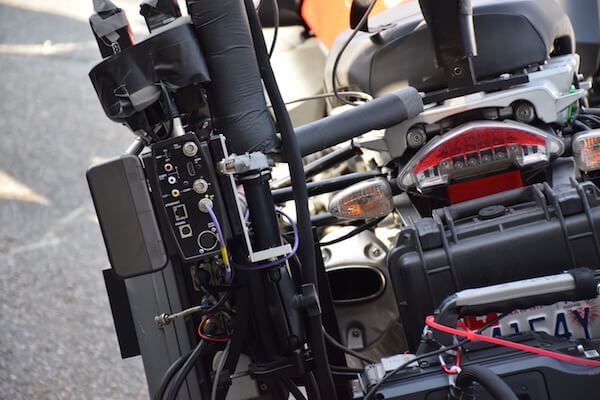When showing LiveShot on the trade show floor, there are a few questions that come up over and over again. This month, our Codec Answer Guy segment is dedicated to addressing some of these, and working through some common misconceptions about how LiveShot works.
How much bandwidth does it need?
The answer to this question, as with all great questions, is: it depends. Are you transmitting SD or HD? Which profiles are you using? There’s no one magic number, but generally, you need between 2 and 7 Mbps. Here are some guidelines that can help you figure out what you’ll need to get your broadcast off the ground:
| Standard Definition | 2 Mbps |
| High Definition (720p) | 3.5 Mbps |
| High Definition (1080i) | 6.5 Mbps |
For pretty much every standard use case, LiveShot comes with preset profiles that work to optimize performance within these bandwidth requirements.

Photo courtesy of Xentek
Okay, so – how big of a data plan do I need to get if I’m transmitting a 2-hour show every week in HD?
It can be confusing to convert from Mbps to GB per hour, and we don’t yet have a handy calculator on our website like we do for ACCESS. The easiest way to figure out what you need is to use a conversions table like this one.
Using the chart in the link to solve the problem posed in the question: To broadcast in 1080i HD, you need 6.5 Mbps (let’s round up to 7). That’s 3.15 GB per hour! For a 2 hour broadcast, you’d need 6.3 GB. So, if you’re doing 4 shows a month, let’s say you’ll need a data plan that provides at least 25.2 GB.
How far away can the remote unit be from the studio for it to work?
LiveShot isn’t restricted by distance! Unlike microwave equipment, LiveShot doesn’t require line of sight. You’ve got IP networks to worry about instead – bandwidth availability, whether a network is reliable – but this particular concern isn’t applicable.
(Another fun LiveShot fact: you don’t need to use a portable and a rack unit. You can transmit between two rack units, if that’s easier for you. Cool, huh?)
How do I control my units in the field?
We’ve designed LiveShot to be as easy to use as possible. LiveShot Portable can be connected with a single push of a button. To adjust complex settings, it’s simple to log into a portable unit through either the LiveShot’s internal WiFi access point, through Switchboard (a Comrex server that allows for easy connection), or a public IP address. To tweak settings on the fly (even if you’re not in the field with the LiveShot), you can log in through the LiveShot Control app and control anything you need to.
How many modems can I use?
With the LiveShot Hub, you can use up to 4 USB modems; without it, you can use 2. However, “more modems” doesn’t necessarily mean “more bandwidth”. Depending on the strength of the networks you’re using, you will probably have a faster transmission with fewer than that. With the latest firmware, LiveShot is able to intelligently select which networks are strongest, and quarantine the networks that are underperforming so they don’t drag down your streaming speed.
Another way to optimize your broadcast – use the best possible modem. We designed Comrex Connect Modems with a high gain antenna which provides an extra 2dbi gain. As a result, it delivers a more robust signal than consumer modems – they’re as strong as we could make them, while still remaining within the bounds of FCC regulations. However, you can mix and match to find whatever solution works best for you (it’s good to remember – you can only use 2 Connect Modems at once).

Comrex LiveShot, mounted on a motorcycle, ready to cover the Boston Marathon
What do I do if I don’t have access to cellular service?
That’s completely fine! LiveShot is so much more than bonded cellular. In addition to using cell networks, LiveShot can use WiFi, wired broadband IP connections, Inmarsat BGAN and VSAT terminals. Basically, all you need is some form of IP network.
I’ve tried IP before, and thanks, but no thanks. There’s no way I’d trust it to maintain a full broadcast.
We speak to a lot of broadcasters who are skeptical of video over IP technology after a previous bad experience. And it’s understandable! If you’ve been burned before, why try again? However, many of the folks we talk to are basing their opinions on experiences with technology from 5 or more years ago. Technology has matured significantly since then. Would you expect an iPhone from 2011 to perform on the level of an iPhone from 2017? Probably not!
And just to quickly talk about ourselves: Comrex has been selling our IP video technology since 2011. We’ve been experts in IP media transmission since 2006. This is our bread and butter; we’ve been devising ways to broadcast over IP networks over a decade.
Most importantly, there’s a more robust IP infrastructure in place now than there was even two years ago. There are currently over 17 million cable WiFi hotspots in the US. There’s a WiFi hotspot for every 150 people on earth – by next year, it’s projected that there will be one for every 20 people. It’s easier than ever to access reliable bandwidth. Now is a better time than ever to make the switch.
